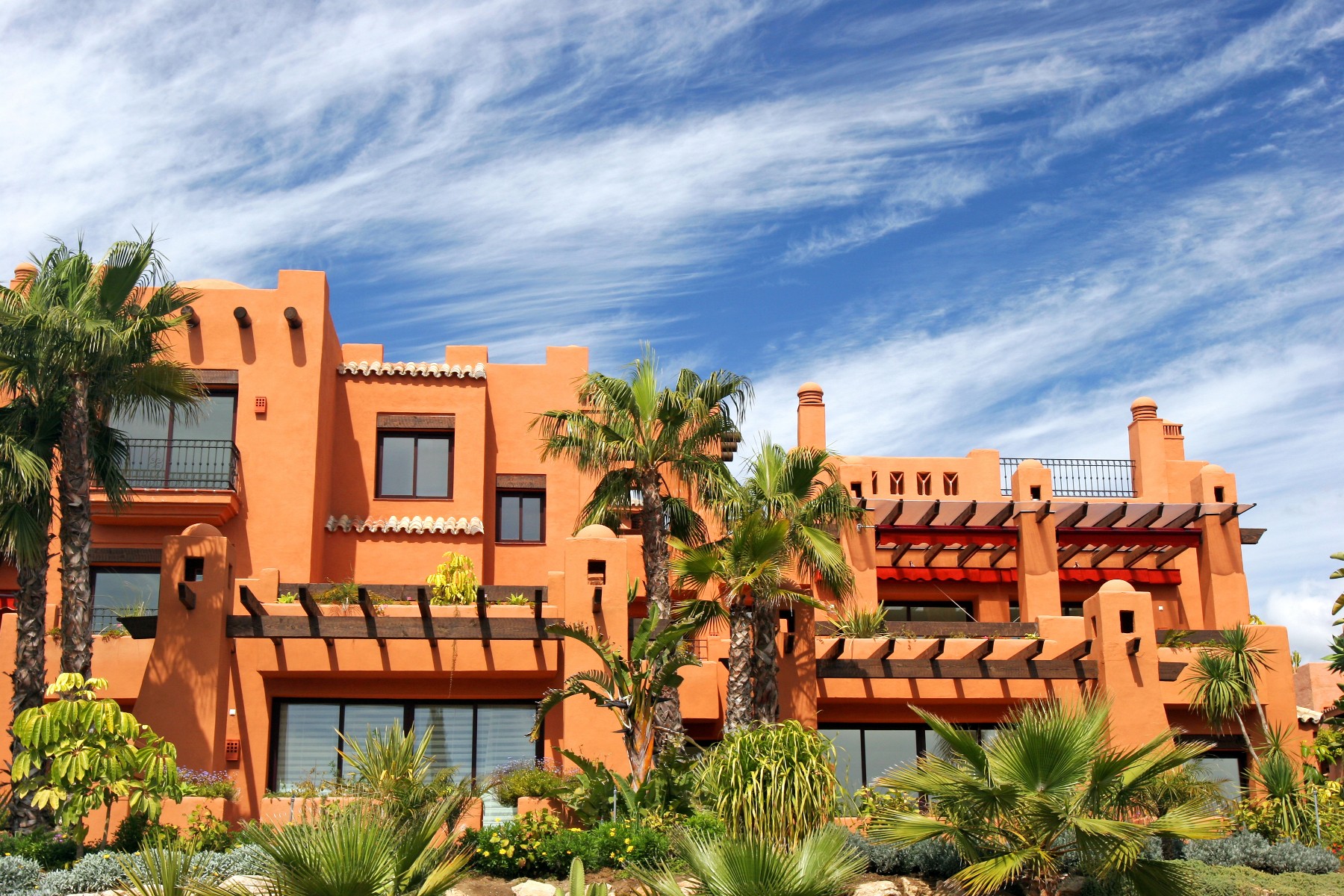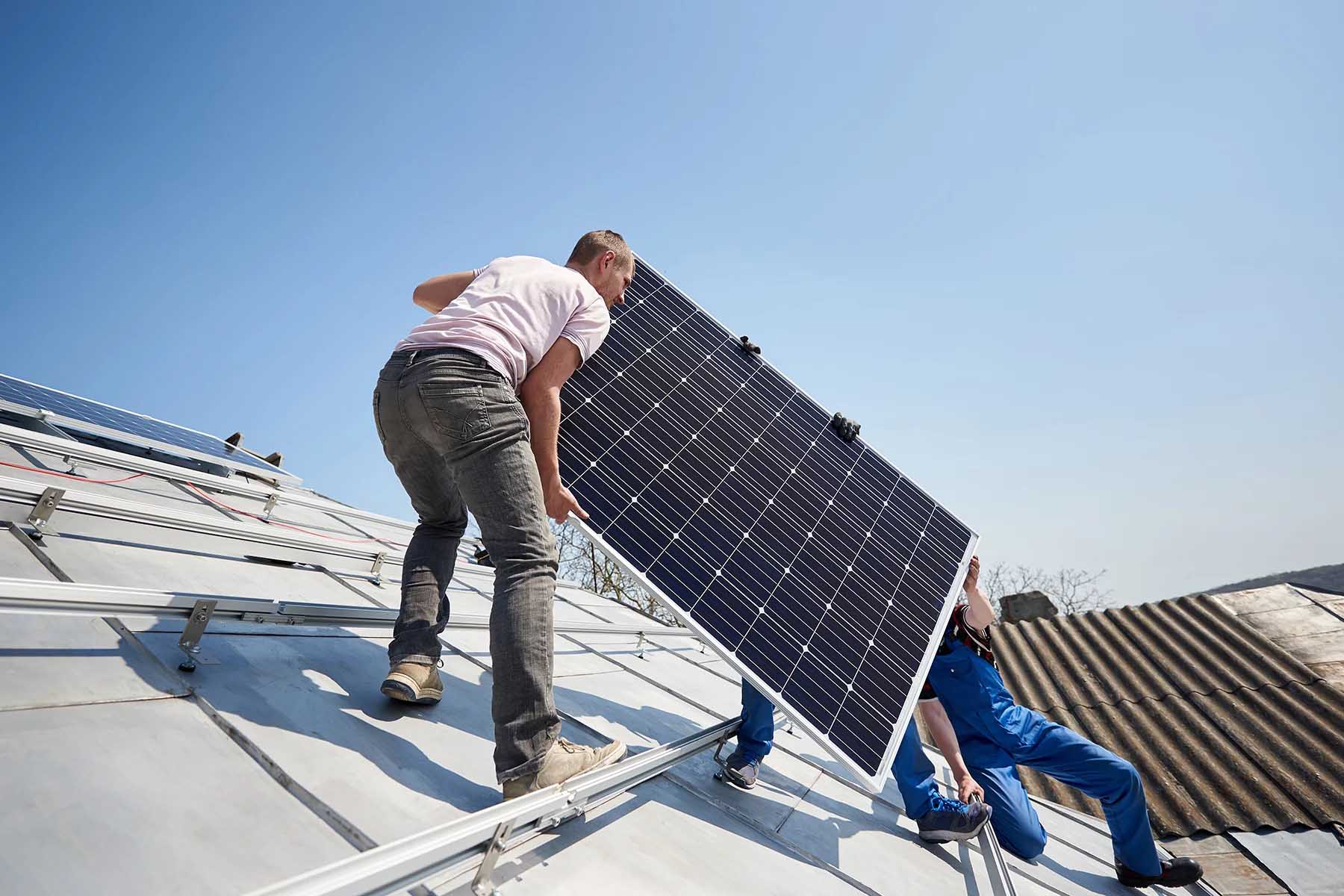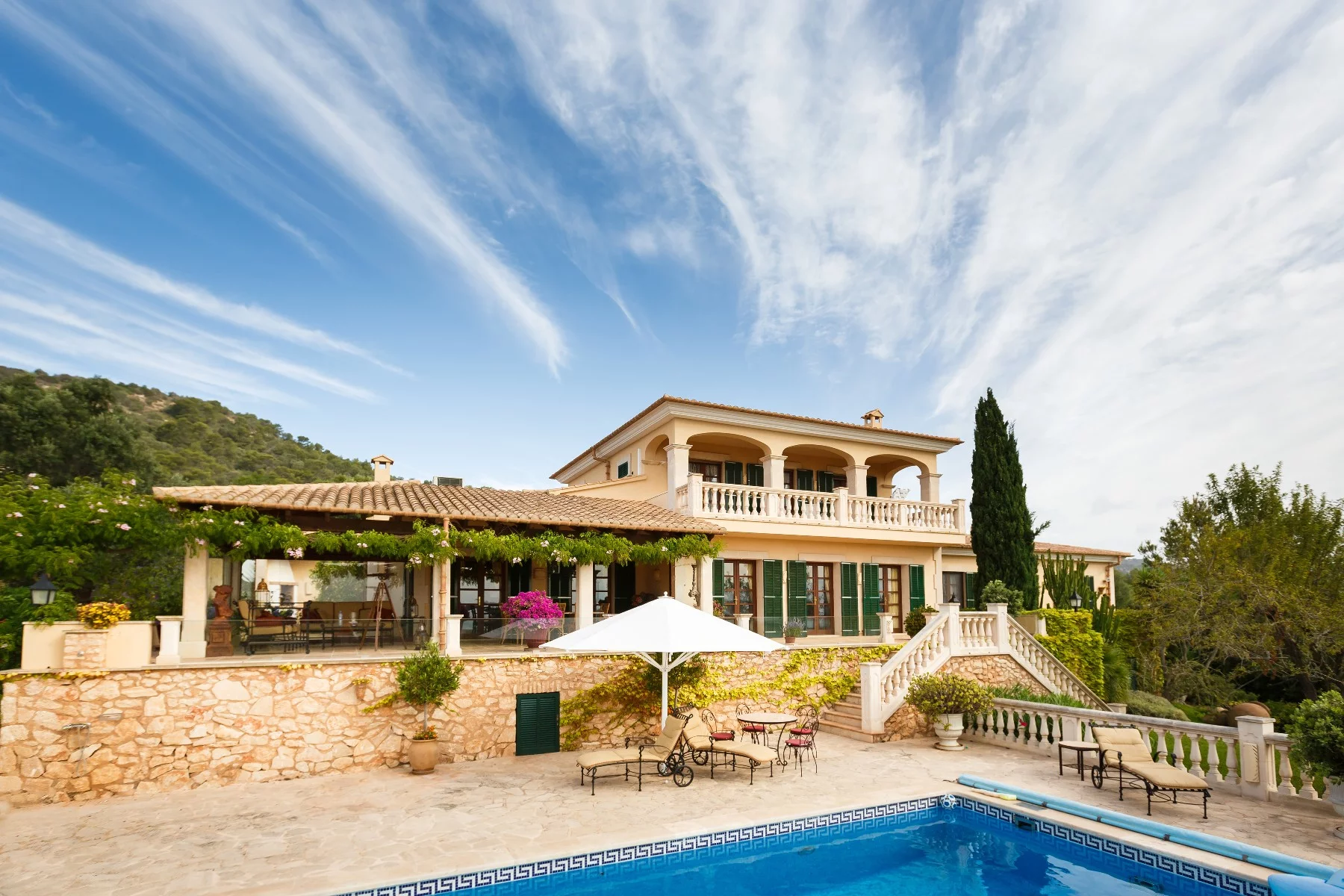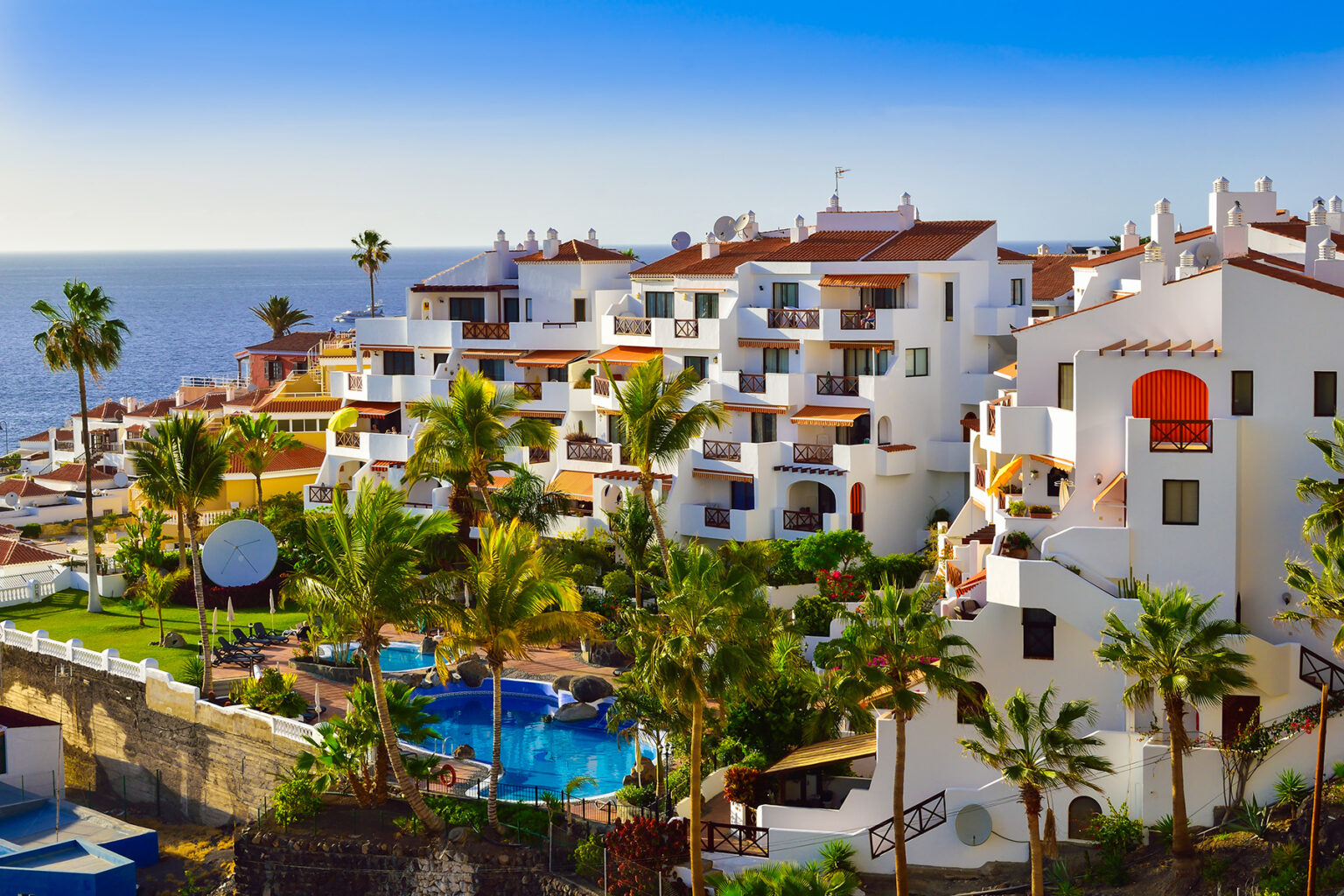Whether you’re buying a long-term home or a holiday villa in Spain, you’ll be happy to hear that the country’s property market is relatively affordable compared to other European countries. However, before you start your start your search, you should find out if you are eligible for a Spanish mortgage and how much you can borrow as an expat in Spain.
Find out the answers in the following sections:
- Mortgages in Spain
- Can you get a mortgage in Spain as a foreigner?
- Mortgage rates in Spain in 2025
- How much can you borrow for a Spanish mortgage?
- Types of Spanish mortgages
- Mortgages for other purposes
- Spanish mortgages for seniors
- Green mortgages in Spain
- How to apply for a mortgage in Spain in 2025
- Help getting a mortgage in Spain
- Mortgage fees and costs in Spain
- Taxes and tax relief on mortgages in Spain
- Do you need property insurance to get a mortgage in Spain?
- How do mortgage repayments work in Spain?
- Refinancing a mortgage in Spain
- Useful resources
Mortgage Direct
Ready to buy your dream home in Spain? Mortgage Direct offers exclusive mortgage deals and simplifies the process for international buyers. Invest safely and profitably. Make your Spanish property dream a reality and contact Mortgage Direct today.
Mortgages in Spain
Recent statistics suggest that about 73.7% of Spain’s population owns their homes, which is higher than the European Union’s average of just under 68.4% (latest figures from 2024).
The country is open to international investors, meaning you don’t need to be a resident to get a Spanish mortgage or buy property. However, your residency status will impact the amount you can borrow from a Spanish bank.

Impressively, almost 15% of homes bought in Spain were bought by internationals in 2024. Of these sales, British, German, and Moroccan are the top foreign nationalities buying homes in Spain.
According to a 2022 report by the Bank of Spain, nearly 30% of Spanish households have mortgage debt. This is above the EU average of 24.9% (2023).

Senior Mortgage Advisor
Stuart Payne
Insider Tip: Have a realistic budget
Research shows that the average costs involved in purchasing a home can be around 10–15% of the property price in addition to purchase costs. This includes taxes (like Property Transfer Tax, ranging from 6–10% depending on the region), notary fees, and registration costs.
In Spain, it’s important to note that these additional expenses cannot be rolled into the mortgage. Failing to account for these costs can leave you financially stretched after closing.
House prices in Spain have been increasing at a faster rate than the European average (2025). It also helps to remember that housing prices vary from city to city. You will likely have to pay much more in the center of Madrid or Barcelona, for example.
Can you get a mortgage in Spain as a foreigner?
As mentioned, you don’t need to be a resident or Spanish citizen to buy property in the country. However, you will need a Número de Identificación de Extranjeros (NIE) to get a Spanish mortgage. This is simply a tax identification number for internationals.
Although you might be able to secure a loan through a bank in your home country, you will likely need a mortgage from a Spanish bank. Your income and other debts are crucial factors in your borrowing power. Self-employed borrowers will need to show the past one to three years of earnings and a self-assessment tax return.
Habeno
Ready to buy your dream home in Spain? Habeno offers tailored mortgage solutions and expert guidance for non-residents. Simplify your property purchase with exclusive deals and dedicated support from their experienced team. Make your Spanish property dream a reality – start your journey with Habeno today.
Spanish mortgage lenders tend to favor residents of Spain. One example of this is the maximum loan-to-value (LTV) that banks will allow for buying property. Residents can generally borrow up to 80% of the property’s assessed value. Non-residents are limited to 50–70% LTV, depending on the mortgage.
Another difference for expats who buy property in Spain is how long you can stay in the country. If you are a non-EU citizen and a non-resident, you will generally only be allowed to visit Spain, and the rest of the Schengen travel area, for up to 90 days per 180-day period. Due to Brexit, this rule also applies to UK citizens who are not Spanish residents.
Financial requirements for a mortgage in Spain
In addition to providing the necessary deposit for your Spanish home, you will typically need to meet the following requirements when taking out your Spanish home loan:
- Income: your debt-to-income (DTI) ratio – in other words, the percentage of your net income spent on monthly outstanding debt payments – can normally be no higher than 35-40%.
- Proof of employment/self-employment: you’ll need proof of your employment, or other form of stable, regular income, in the form of bank statements, payment slips, or employment contract.
- Credit history: Spanish mortgage providers will want to see evidence that you have no bad debts on your record.

Bear in mind that requirements may be more stringent for non-residents. For example, you may need a bigger deposit or have a lower DTI threshold. If you’re self-employed or a freelancer, you will usually need to provide at least two years of tax returns.
Mortgage rates in Spain in 2025
Mortgage rates in Spain vary depending on several factors, including the Euribor rate and the type of mortgage taken out. To view current mortgage rates, check Spain’s National Institute of Statistics (INE)’s website. The current average Spanish mortgage rate is 3.23% (April 2025).
It’s also a good idea to keep an eye on inflation and interest rates, as these can affect mortgages and house prices.
How much can you borrow for a Spanish mortgage?
The loan-to-value (LTV) ratio in Spain is generally around 70–80% for residents and 50-70% for non-residents. This means the amount of the property value or purchase price that the lender will cover with. mortgage. You will need to supply the outstanding amount yourself as a deposit. The LTV ratio can sometimes be lower for self-employed buyers or those buying holiday or buy-to-let accommodation.
Upscore
With Upscore, you can get a mortgage in Spain using income from your home country, with lenders matched to your needs. They allow you to apply remotely, compare rates, and get personalized support. Get the most value out of your financial data and unlock opportunities wherever you move with Upscore.
The amount you can borrow also depends on your income. Most Spanish banks will want to see that your monthly debts including mortgage repayments don’t exceed 40% of your net monthly income. The threshold can be lower with some lenders, especially for non-residents.
Spanish mortgage calculator
You can use one of these free mortgage calculators to find out the approximate monthly payment for your mortgage:
Types of Spanish mortgages
There are two main types of mortgage loan in Spain: variable and fixed. However, you will additionally find a few other mortgage products offered by some banks.
Generally, residents in Spain can access loans of up to 40 years. For non-residents, the typical length of the mortgage is 15 to 20 years.
Variable-rate mortgages
The benefits of variable interest rates include taking advantage of low rates and having access to more Spanish mortgage options. The interest rate is adjusted with the Euro Interbank Offered Rate (Euribor).
The disadvantage is not knowing how much your monthly mortgage payments will be in the long term because interest rates can rise.
Fixed-rate mortgages
This type of mortgage is less risky since you will know exactly how much your monthly repayments are for the entire duration of the mortgage. You are also protected from future interest rate increases because the rate is fixed.
This mortgage product became more popular with Spanish homebuyers in 2020 because it offers more security in uncertain markets. On the other hand, you will pay more to borrow money when interest rates are low.
Mixed-interest-rate mortgages
As the name suggests, this type of mortgage uses both a fixed and a variable rate. Most of these mortgages fix the rate for five years and then automatically convert it into a variable mortgage. Spanish lenders rarely offer this option.
Interest-only mortgages
Interest-only mortgages are less popular than other types of mortgages in Spain. Only residents can take out this type of mortgage, which allows you to pay off just the interest for the first term. While you can save money on your monthly repayments with an interest-only mortgage, you will often pay more in the long run, as it takes a lot longer to pay off the entire amount.
Mortgages for other purposes
Commercial property mortgages
If you are an entrepreneur in Spain, you may want to purchase a commercial property for an office, shop, or restaurant. Commercial loans can usually fund a maximum of 50% of the price or valuation of the business you intend to buy, although you may find some lenders willing to offer a higher LTV ratio.
To apply for a commercial loan, you will need to present the bank or lender with all the documentation related to your business. This can include your business plans, accounts for any previous businesses, and evidence of previous experience.
Construction mortgages
The amount you can borrow for construction depends on your building plans and personal circumstances. You may be able to borrow 50 to 70% of the land and construction costs combined and up to 80% if you’re a resident. The interest rate of a construction mortgage is usually higher than for a completed house.
Spanish mortgages for seniors
If you are a Spanish resident over 65 and receive a pension, you can retire in Spain and apply for a mortgage to buy a home.
One product that can benefit expats is a Lifetime Loan, a form of home financing in Spain that allows seniors to release equity from their homes and convert it into cash. This places a mortgage against the property that doesn’t need to be repaid within the property owner’s lifetime.
Green mortgages in Spain
Since 2019, the Spanish government has incentivized property buyers to purchase more energy-efficient homes and buildings. However, the property must be new and meet sustainable living standards that are higher than average for the market. Buyers should look for an energy rating of A+, A, or B.
If the house qualifies for a green energy mortgage, the buyer will receive more favorable loan conditions, such as a lower interest rate. Most of the main Spanish banks now offer green mortgages.

Homeowners who wish to borrow money for eco-friendly renovations could benefit from Spain’s sustainable financing initiative.
Unión de Créditos Inmobiliarios (UCI) offers green and sustainable loans to individuals and condominiums investing in building renovations. The projects should lead to at least a 30% improvement in the energy efficiency of the building.
How to apply for a mortgage in Spain in 2025
Banks and savings banks (cajas) offer mortgages in Spain, but expats might find it difficult to go this route on their own. For peace of mind, you may want to reach out to a mortgage broker or expert who can help with the process and finding the best rates. Some of the top mortgage experts working in Spain include:
Before applying for a Spanish mortgage, you need the Spanish tax ID number for foreigners (Número de Identificación de Extranjeros – NIE). You can apply at any local police station if you’re in Spain. Otherwise, you should contact your local Spanish consulate.

Senior Mortgage Advisor
Isac Gustafsson
Insider Tip: Know your borrowing capacity
Spanish banks use a Debt-to-Income (DTI) ratio to assess your mortgage eligibility. Ideally, your DTI should not exceed 35%. Here’s how it’s calculated:
- Net monthly income (I): your average monthly income over the past three years, based on tax returns
- Debts (D): includes monthly payments like your mortgage, car loans/leases, personal loans, alimony, and rent, but excludes things like credit card balances, household bills, and groceries.
After you apply for a Spanish mortgage
Once you submit your completed file to the bank and the underwriters have processed everything, the bank will make you a mortgage offer.
When you agree to an offer, you will sign the mortgage contract in the presence of the notary (notario). If you’re not able to attend in person, you may be able to appoint a lawyer to represent you. As soon as the notary certifies that all the documents are in order, the deed is ready for taxes.

At some point in this process, it is also a good idea to open a Spanish bank account if you haven’t done so already. This way, you can deposit the money you need to pay the mortgage. Additionally, you should consider your options for property insurance. Banks usually require that you insure against fire and other disasters.
Banks offering mortgages to expats in Spain
Most of the larger Spanish banks and financial institutions offer mortgages to non-residents. You can find a list of banks in Spain in our dedicated article. Furthermore, international banks can also help you to secure a mortgage. To find out which lender and product suits you best, speak to a broker at Mortgage Direct.
Help getting a mortgage in Spain
The Spanish government and local banks have launched programs in recent years to make it easier for young people to enter the housing market. For example, Spain’s Official Credit Institute (ICO) offers a 20% guarantee on mortgages for young individuals and families (under 37 years old) buying their first home.

Senior Mortgage Advisor
Stuart Payne
Insider tip: Consider a broker
The Spanish mortgage market is complex, and navigating it without expert support can lead to costly mistakes. Research indicates that buyers who work with mortgage brokers can save an average of 1% on interest rates compared to those who go it alone.
A qualified mortgage broker can help you understand mortgage offerings, negotiate better terms, and guide you through the application process.
Mortgage fees and costs in Spain
A 2019 law changed the fees associated with Spanish mortgages to be more aligned with other EU countries. These days, banks should pay the costs linked to the signing of the loan, such as agency fees, notary fees, registration fees, and the Impuesto Sobre Actos Jurídicos Documentados (AJD) also known as stamp duty.
The borrower pays for the property valuation or appraisal, which is always required to secure a mortgage. You will also pay an arrangement fee to the bank when you officially close the deal. Expect to pay around 2% of the loan amount on fees in total.
Taxes and tax relief on mortgages in Spain
In Spain, property tax rates (Impuesto Sobre Bienes Inmuebles – IBI) are set by the local tax authorities. As such, they will vary depending on where you buy your property. You can expect a range from about 0.4% to 1.3% of the property value, according to land registry records.

You pay this Spanish tax if you own the property on 1 January of any given year, whether you are a resident of Spain or not. However, you can generally pay in installments. Non-resident property owners may also need to pay income tax on any earnings from renting out the property.
Since 2013, there has been no tax relief on interest paid on Spanish mortgages.
Do you need property insurance to get a mortgage in Spain?
Your Spanish mortgage will likely require that you insure your home against fire damage and loss. Life insurance is not mandatory, but many lenders require borrowers to take out life insurance policies that can cover an outstanding mortgage balance.
It’s worth considering mortgage insurance, which protects you if you can’t make mortgage payments. Taking out a life insurance policy and mortgage insurance before applying for a mortgage may even result in better interest rates.
How do mortgage repayments work in Spain?
A monthly Spanish mortgage payment has two parts: capital repayment and interest payment. When you sign the mortgage contract, the bank will give you a printout of the payments you will make over the first year (for variable-rate mortgages) or the entire mortgage term (for fixed-rate mortgages). This document will indicate how much of the payment is the capital and how much the interest is.
If you want to pay off your mortgage faster with larger monthly payments, you should first check your mortgage contract to see if this is allowed. Many lenders also have a calculator to show the benefits of overpaying mortgage bills.
Another Spanish housing regulation benefits homeowners who can pay off their Spanish mortgage early. Nowadays, the fees that banks can charge homeowners for early mortgage repayment are lower and can only be levied if the bank loses money on the deal.

Furthermore, Spanish banks can no longer delay the early repayment of a mortgage. The maximum notification time a bank can require is one month.
It is important to know that simply paying off the debt is not the final step in canceling a Spanish mortgage. You must ask your bank to issue the notarial deed of cancellation (escritura de cancelación de hipoteca). Then, you should present this to the land registry yourself or have a lawyer or administration office (gestoria). You will have to pay the fees and taxes associated with this process.
Refinancing a mortgage in Spain
You may be able to benefit from lower interest rates by refinancing your Spanish mortgage. In Spain, you can refinance with the same bank or use a different one. By refinancing, you can:
- Lower your monthly mortgage payment
- Modify the interest rate terms (e.g., going from variable to fixed rate)
- Get a longer or shorter mortgage term
- Use your home equity to borrow more money
Useful resources
- Euribor – current Euribor interest rates
- National Institute of Statistics (INE) – the official website for Spain’s mortgage rates, updated monthly







